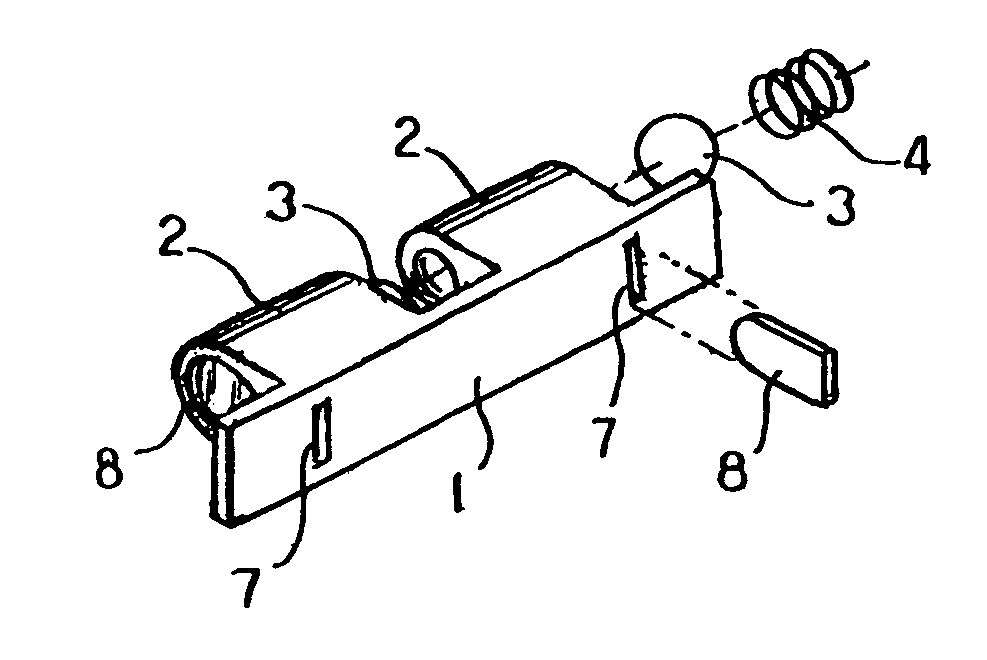Door catch
a door and latch technology, applied in the field of door latches, can solve the problems of requiring a relatively high manufacturing cost, and achieve the effects of reducing the manufacturing cost, eliminating the drawbacks, and being easy to assemble and mount without the risk of loosening and/or separation of insert plates
- Summary
- Abstract
- Description
- Claims
- Application Information
AI Technical Summary
Benefits of technology
Problems solved by technology
Method used
Image
Examples
Embodiment Construction
[0015]The following descriptions are of exemplary embodiments only, and are not intended to limit the scope, applicability or configuration of the invention in any way. Rather, the following description provides a convenient illustration for implementing exemplary embodiments of the invention. Various changes to the described embodiments may be made in the function and arrangement of the elements described without departing from the scope of the invention as set forth in the appended claims.
[0016]Please refer to FIGS. 3 and 4, which are exploded perspective view and assembled top sectional view, respectively, of a door catch according to the present invention. As shown, the door catch of the present invention includes a back plate 1 having two laterally symmetric sleeves 2 formed on a front face thereof. The door catch of the present invention is characterized in that a slot 7 is provided on the back plate 1 behind each of the sleeves 2 at a predetermined position to communicate wit...
PUM
 Login to View More
Login to View More Abstract
Description
Claims
Application Information
 Login to View More
Login to View More - R&D
- Intellectual Property
- Life Sciences
- Materials
- Tech Scout
- Unparalleled Data Quality
- Higher Quality Content
- 60% Fewer Hallucinations
Browse by: Latest US Patents, China's latest patents, Technical Efficacy Thesaurus, Application Domain, Technology Topic, Popular Technical Reports.
© 2025 PatSnap. All rights reserved.Legal|Privacy policy|Modern Slavery Act Transparency Statement|Sitemap|About US| Contact US: help@patsnap.com


